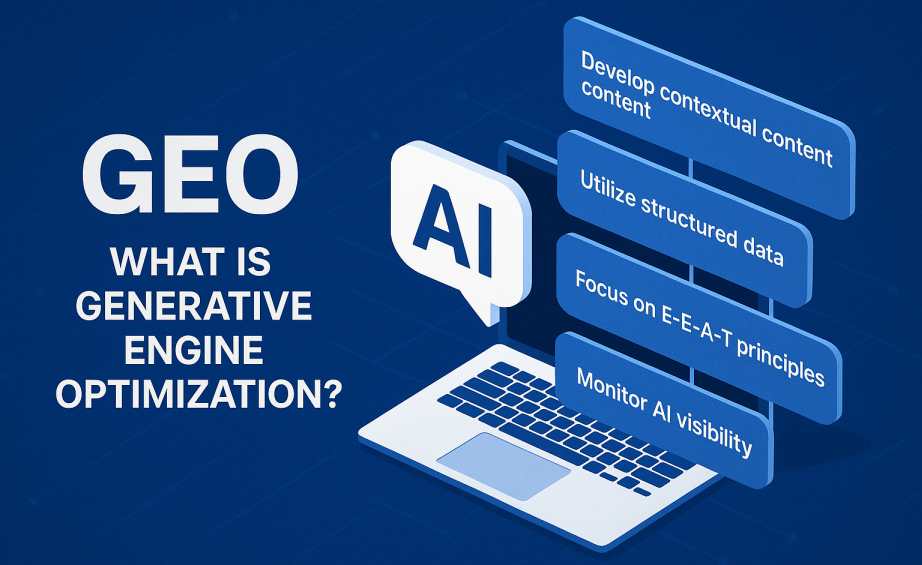
- July 18, 2025
- wallahleads@gmail.com
- 0
The digital marketing world is undergoing a massive shift, thanks to the rise of AI-powered tools like ChatGPT, Bing Copilot, and Google Gemini. These generative AI platforms aren’t just answering questions anymore—they’re shaping how users discover information, make decisions, and choose brands. Welcome to the era of Generative Engine Optimization (GEO).
What is Generative Engine Optimization (GEO)?

GEO refers to the process of optimizing your content, brand, and digital assets to be discoverable and recommended by generative AI systems. Unlike traditional SEO, which targets search engine algorithms, GEO targets AI chatbots and assistants that generate answers and suggestions in real-time.
Why GEO Matters More Than Ever
AI chatbots are now being used for everything—from shopping advice and travel planning to business recommendations and product comparisons. Instead of typing a keyword and clicking on a search result, users are now asking AI directly. If your brand doesn’t show up in that conversation, you’re invisible.
Key Differences Between SEO and GEO

Search Engine Optimization (SEO): Focuses on search engines like Google, using keywords, backlinks, meta tags, and on-page content.
Generative Engine Optimization (GEO): Focuses on AI-generated answers, based on credible sources, structured data, and real-world relevance.
How to Optimize for Generative Engines
Structured, Authoritative Content: Write detailed, well-researched content that answers specific questions. AI prefers factual, high-quality sources over clickbait.
Establish Topical Authority: Create multiple pieces of content around a specific topic. This helps AI engines recognize you as a subject-matter expert.
Leverage Schema Markup: Use structured data to help AI understand your content better. This includes FAQs, reviews, events, and product data.
Get Cited by Reputable Sources: Generative engines rely on sources they trust. Backlinks from high-authority websites and media mentions improve your visibility.
Create AI-Readable Assets: AI tools crawl and parse data differently than traditional crawlers. Ensure your text is clear, concise, and free of jargon.
Be Present in Online Databases: AI engines pull data from platforms like Wikipedia, Crunchbase, LinkedIn, and other public sources. Make sure your profiles are updated.
Answer-Specific Content Formats: Listicles, FAQs, how-to guides, and definition articles tend to perform better with generative AI tools.
Tools That Can Help With GEO
ChatGPT and Gemini: Analyze how AI responds to queries in your niche.
AlsoAsked and AnswerThePublic: Identify popular questions to target.
SurferSEO and Clearscope: Optimize content for relevance and depth.
Future of GEO

As generative AI becomes more integrated into daily life, being discoverable in AI-generated content will be essential. GEO isn’t just a trend—it’s the next evolution of digital visibility.
Final Thoughts
If SEO got your website on Google’s first page, GEO will get your brand into AI conversations. The key is quality content, credibility, and strategic distribution across AI-visible platforms. Brands that adapt early will dominate the new digital frontier.

